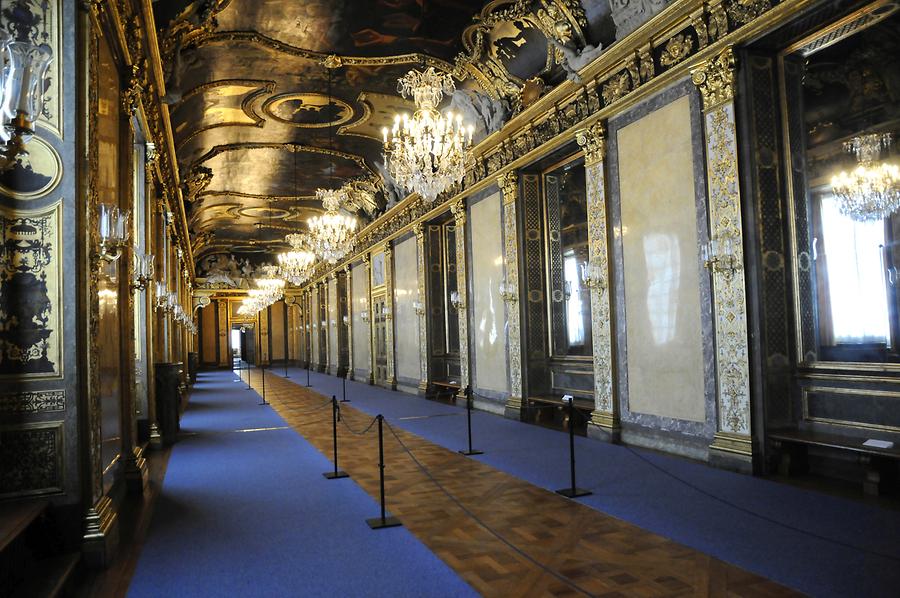Royal Castle - Inside#

Royal Castle - Inside, August 2012, © Gerhard Huber, under CC BY-NC 4.0 +Edu
The part of the castle that is accessible for the public provides a representative image of the life in the castle. The Swedish king holds no actual power though, since he is only the representative head of state. The king even has “to coordinate with the prime minister” all of his trips abroad – so the constitution states. Nevertheless three quarters of the Swedish people still support their monarchy as a place to project their dreams and desires. It is a form of governing that focuses the attention of the nation on how people do things of importance. Marrying, strolling or smiling for example – simple, heartwarming gestures in a complex and confusing world. As Heinrich Heine has already stated: “It sometimes seems to me, as if the devil and nobility only exist so long as people believe in them.”.
Der öffentlich zugängliche Teil des Prunkbaues liefert ein anschauliches Bild vom Leben im Schloss. Der schwedische König verfügt jedoch als repräsentatives Staatsoberhaupt über keinerlei Machtbefugnisse. Sogar bei allen Auslandsreisen muss er sich – so schreibt es die Verfassung vor – „rechtzeitig ins Benehmen mit dem Ministerpräsidenten setzen“. Trotzdem stehen über drei Viertel der Schweden zu ihrer Monarchie als Projektionsfläche für Träume und Sehnsüchte. Eine Regierungsform, in der sich die Aufmerksamkeit der Nation darauf konzentriert, wie eine Person bedeutende Dinge tut. Also heiraten zum Beispiel, spazieren gehen oder lächeln. Einfache, herz-erwärmende Sachen in einer verworren komplexen Welt. Schon Heinrich Heine brachte es auf den Punkt: „Mich dünkt zuweilen, der Teufel und der Adel existieren nur so lange, als man an sie glaubt.“.